Estimated Read Time: 5 minutes
Biophilic design is an architectural concept that incorporates various natural decor into indoor settings.
This tactic bridges the gap between the natural world and modern built environments.
But it’s more than a trend: It’s a forward-looking philosophy centered around nature’s profound impact on our well-being, productivity, and overall quality of life.
Humans are biologically encoded to feel a certain way around nature so it’s crucial to explore biophilic design in your business.
What are the Benefits of Biophilic Design?
A primary reason that business facilities implement this design tactic is because of the mental benefits it provides staff, guests, customers, and patients:
- Increased productivity
- Accelerated healing
- Promotes calmness
- Stress reduction
- Heightened mental well-being
- Positive impact on job satisfaction
How Does Biophilic Design Help the Environment?
The benefits of biophilic interior design go beyond mental health; It also contributes to a healthier environment!
- Use of Sustainable Materials: Biophilic design often emphasizes sustainable and eco-friendly materials. This includes responsibly sourced wood, recycled materials, and other resources that have a minimal environmental impact.
- Energy Efficiency: Biophilic design integrates energy-efficient strategies, such as maximizing natural light to reduce the need for artificial lighting. This lowers energy consumption and contributes to occupant well-being.
- Indoor Air Quality: Indoor plants and greenery naturally filter pollutants in the air, enhancing the health of occupants and reducing the need for air purifiers.
- Natural Ventilation: Designing spaces with natural ventilation reduces reliance on mechanical systems, saving energy and promoting a healthier indoor environment.
- Promotes Sustainable Lifestyles: Spaces designed with biophilia often encourage sustainable behaviors. For example, the presence of bicycle storage facilities or the addition of walking paths can promote eco-friendly commuting and active lifestyles.
5 Ways to Implement Biophilic Design
Natural Light Optimization
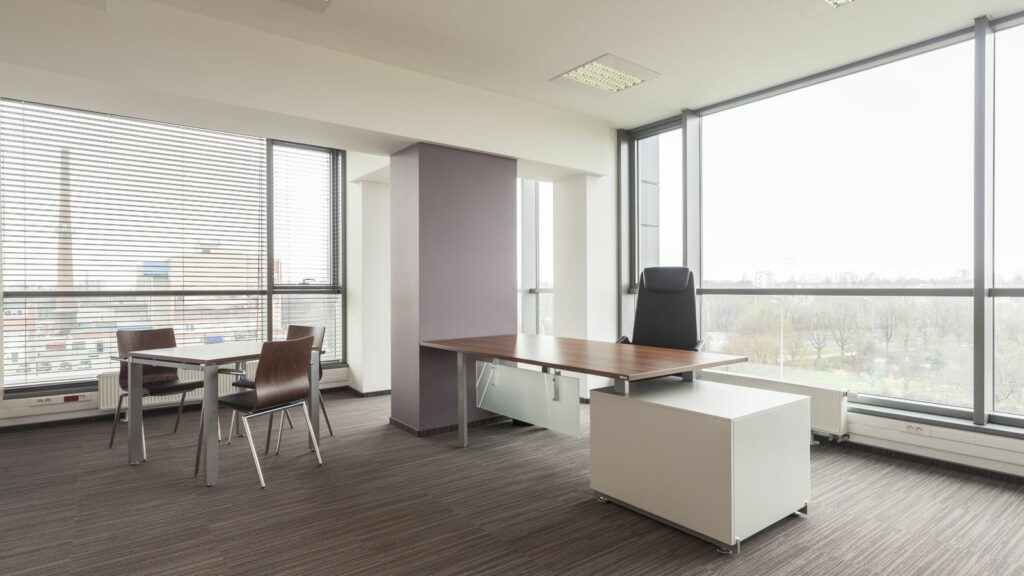
Maximize natural light in your space by ensuring every window, skylight, glass partition, etc. is unblocked and provides as much light as possible.
This not only reduces the energy costs of artificial lighting but also has a significant impact on employees’ moods.
In a 2017 study conducted by the Future Workplace, researchers found that access to natural light and outdoor views greatly improved four crucial areas of the employees’ mindsets at work:
- Work Satisfaction (+73%)
- Work Performance (+70%)
- Happiness and Wellbeing (+78%)
- Organizational Commitment (+54%)
Indoor Plants and Greenery
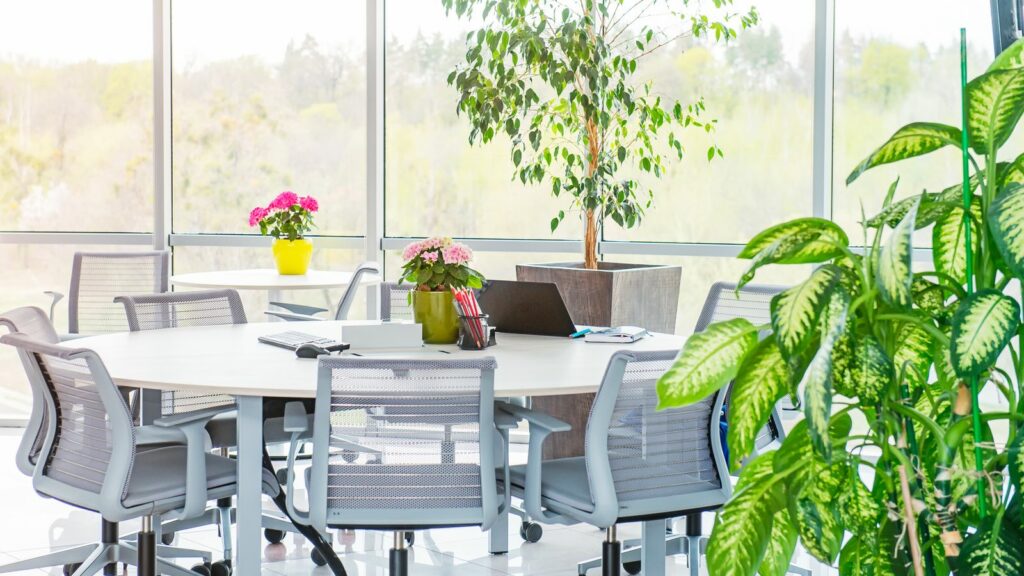
Introduce potted plants, hanging planters, verticle gardens, or even a collection of indoor trees. Plants contribute to improved air quality and create a calming and refreshing atmosphere.
Further research shows that simple indoor plants and greenery can increase employee productivity, creativity, concentration, and overall wellbeing!
Water Features
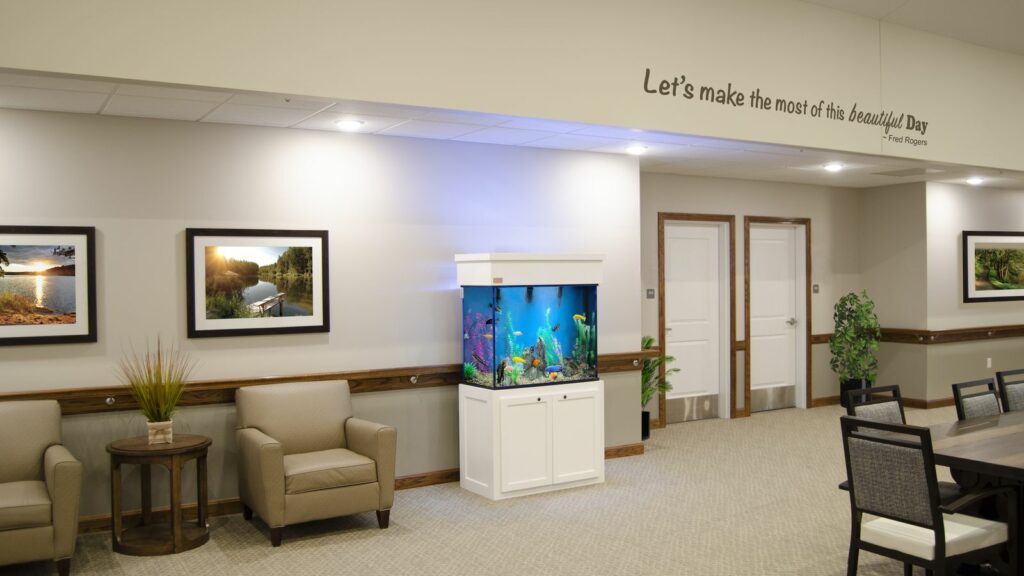
Incorporate water features like indoor fountains or aquariums in interior design. Water features provide the sound and movement of water which has a natural calming effect on staff, residents, and guests alike.
With a fish tank, business facilities can display a flourishing aquascape with vibrant fish for a more engaging and therapeutic experience.
We’ll clean the aquarium for you too!
Nature-Inspired Patterns and Textures
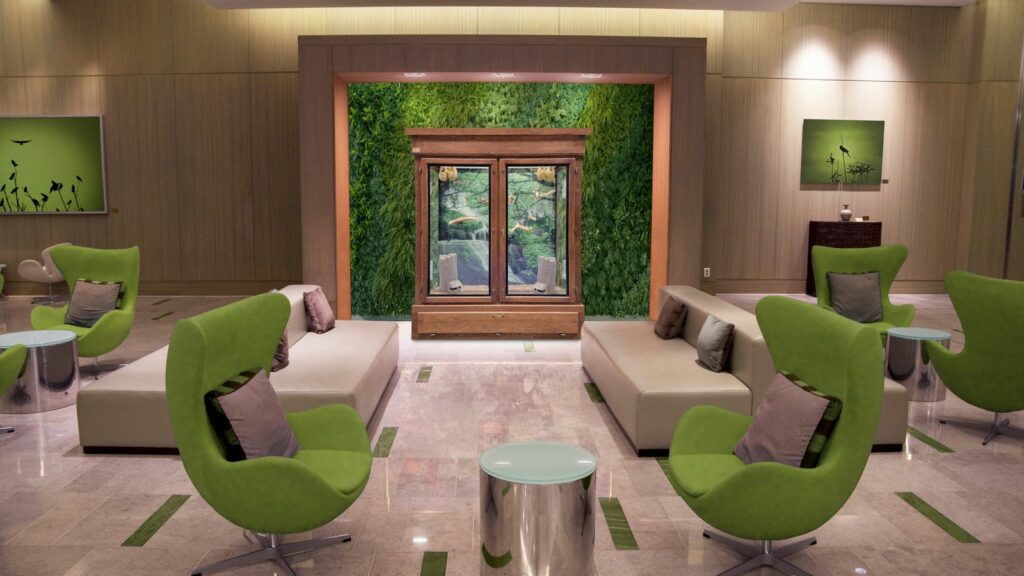
Use design elements inspired by nature, such as organic patterns, biomimicry, and textures resembling natural surfaces. This can be applied to furnishings, wall coverings, and floorings.
These patterns and materials evoke a connection to nature, adding warmth and authenticity to the space. For a more alluring display, consider adding a Serenity Aviary like the one you see above!
We regularly clean commercial aviaries too!
Outdoor Spaces and Views
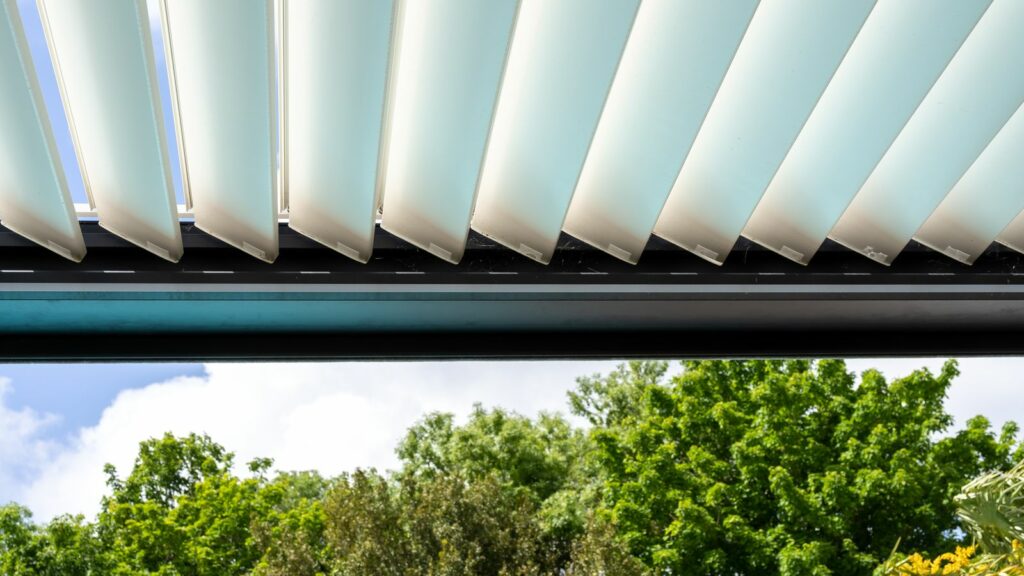
Design outdoor spaces, such as courtyards, rooftop gardens, or balcony areas, where your staff can meet to collaborate, enjoy lunch breaks, and connect with nature.
Additionally, try to ensure that indoor spaces offer views of these outdoor green areas. Every workday, your team can be surrounded by 4 dull walls and artificial light, or have a view of beautiful outdoor greenery with the sun beaming through the windows.
If your facility doesn’t have adequate space or environment for these outdoor areas, it’s even more important to include natural elements and accents in your interior design.
Conclusion
As we navigate the challenges of the present and look toward the future, biophilic design stands out as a sustainable and human-centric approach to interior design and architecture as a whole.
It enhances the immediate experience of the occupants and aligns with the broader goals of environmental sustainability.
The use of natural materials, energy-efficient designs, and a focus on adaptable spaces contribute to this design method that goes hand in hand with our planet’s well-being.
Our Experience in Biophilic Design
At Serenity, we build and service aquariums and aviaries for healthcare facilities, hotels, commercial offices, and many more!
For almost 15 years, our spacious animal enclosures have been a foundational piece to fostering positivity in the workplace and an overall greater connection to nature.